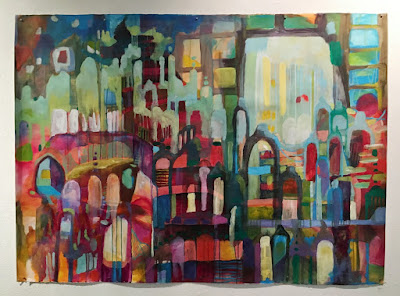Bryan Valenzuela's Multitudes Converge at Golden 1 Center
Photo by David Wakely
I attended a lecture by Sacramento artist and Sac State alumnus, Bryan Valenzuela. He spoke about first starting school as a musician studying composition with violin. He even has road exerience as a touring musician. As a musician myself, it was interesting to hear another artist also speak about the music side of their creative life. Valenzuela described falling in love with making art and "dramaticism of color" being his first interest, in parallel to his attention to music tonalities. He also spoke about his formal influences being Chuck Close and Jean-Michel Basquiat. He was drawn to Close's hyper-realistic, redering ability, and the use of text when it came to Basquiat. He also spoke about Sac State's library's collection of artist monographs, and them being a huge asset in his learning. I think it's good for students to hear that and recognize the importance of learning outside of the classroom envionment, too.
Valenzuela then spoke about his process and work. He primarily makes pen-and-ink drawings. A lot of the drawings are constructed from using his writings and/or writings of poets, to weave and wrap the text so it constructs a portrait. Literature is an important source to his work. He also spoke about sewing canvas together for the "hand-made" quality and because it's cost-effective when you have a lot of scrap. He then mentioned the long and laborious process of designing and completeing his Multitudes Converge piece, which is currently installed in the Golden 1 Center. The inspiration came from a line in David Mitchell's Cloud Atlas which says, "Yet what is an ocean but a multitude of drops." From there, Valenzuela got approved for his piece, as one of five artists competing for the grant. He then went to the Czech Republic and made over six-hundred glass spheres, in sizes of twelve, sixteen, and twenty. Even though he displayed a little over four-hundred pieces, he had to make extra because many would break.

















































